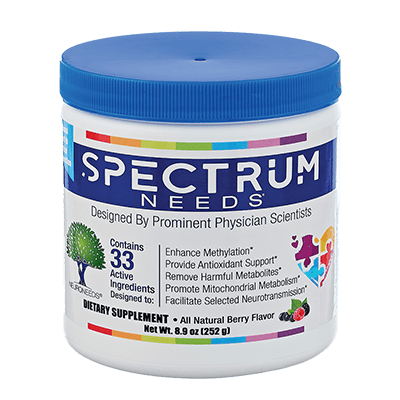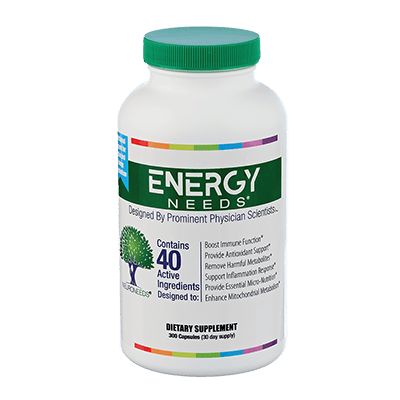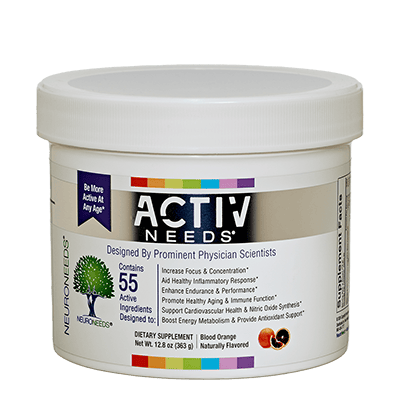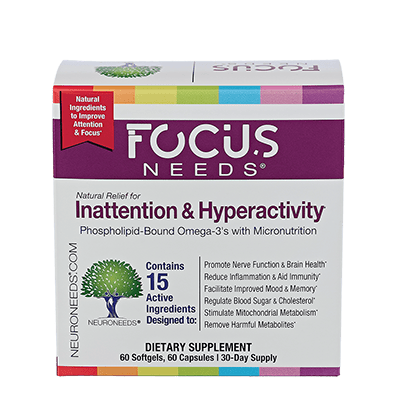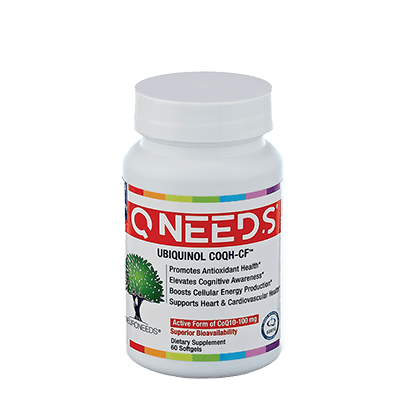By: Dr. Jean-Ronel Corbier*
Meaning of Restoration
The Restoration Model is based on the concept that a return to optimal health is possible. There must be some deviation from normal for illness to occur. This deviation can occur at any time (even very early on e.g. before birth, or during the perinatal period, or during the first few years of life as with neurodevelopmental disorders). The deviation from normal can be caused by many factors that affect the victim through some form of trauma. Although the initial impact of the trauma can result in dysfunction, healing and prevention of secondary problems are possible. It is always important to identify and treat the effects of the primary disturbance for restoration to occur. Traumatizing insults can be physical, emotional, mental, psychosocial, spiritual, or a combination of these. Restoration necessitates fully addressing each of these areas. The Restoration model is based on the simple assumption that the body, and brain have the intrinsic ability to heal themselves. A person can return to normal (optimal health) if the underlying problem(s) and their secondary affects are corrected. To affect this healing, though, we must use safe and effective tools. The restoration model is applicable to any illness or medical condition in adults or children. I will focus on one of the most complex, chronic, and multifaceted disorders and one that I am very familiar with, autism.
Details of the Restoration Model
I initially chose the term “RESTORATION” because it describes the intent of the model, which is re-establishment of health and wellness. I wish to discuss below the ingredients necessary for brain and body restoration.
First, the model is based on the following premises:
• We all have self-healing bodies (including our brain that can rewire itself owing to its intrinsic neuroplastic properties). We are fully equipped with all the tools, processes, and the innate intelligence necessary to heal ourselves when we are sick.
• We are complex beings with a body, mind, and spirit. We have emotional and spiritual needs as well as more tangible bodily requirements. A disturbance in any of these areas can affect all the others.
• To remain healthy or return to health we must follow a set of laws, regulations, and guidelines that promote wellness. There are no shortcuts.
• Violation of these health laws place us at great risk for all types of malfunction (spiritual, physical, behavioral, psychiatric or emotional).
• Total restoration is always possible although a great deal of time, effort and planning may be needed in complex and chronic cases.
• Because total restoration is possible, one should always maintain an optimistic and hopeful attitude. Patience is required. This attitude itself can contribute to health.
Psychosocial factors and the RESTORATION model
We live in such a fast pace, high expectation, individualistic society, that it is very easy to get overwhelmed and stressed. There are more and more individuals developing anxiety and mood disorders. Even young children are having ‘nervous breakdowns’. In keeping with these problems, I see a subset of children referred to me for neurological problems such as refractory seizures, gait abnormalities, weakness, or chronic headaches that sometimes turn out to have severe emotional disturbances that account for what appears to be a neurological problem. In other words, seizures for instance, do not always have to be neurologic in origin. They can be psychogenic, the result of an emotional breakdown. An individual with non-epileptic seizures may not gain control of their ‘refractory’ or hard to control seizures with anti-seizure drugs. The individual does not have an incurable case of epilepsy. Simply, the wrong form of treatment is being implemented for this patient. This scenario is not at all uncommon. I had an adult patient whose seizures where so prolonged and unrelenting that the patient was about to be placed on a breathing machine (intubated) prior to being placed into a drug-induced coma to stop the seizures when it was discovered that the seizures were of psychogenic etiology. The patient revealed to the medical team that she was under a lot of stress and ‘at the end of her rope’. Her stress was converted into an apparent seizure disorder. With appropriate counseling and support, this patient’s seizures disappeared completely, without seizure medicines.
Many children with behavioral and academic difficulties of unclear etiology may have disorders that are largely psychogenic in origin. Others may have low self- esteem. Many children get insufficient praise, which children need to thrive. Children need to believe in themselves. Their parents and teachers need to believe in them as well. And children need to know that their parents and teachers believe in them.
I took care of a child who had a lot of problems including a severe speech delay. This child’s parents were told by other specialists that he would never talk because of the severity of his problems. He was almost 5 years old at that time. I saw him for several visits before he was lost to follow up. I saw him again after a couple of years and was pleasantly amazed to see that he was now speaking well and getting good grades in a mainstream classroom. I asked the family what made the difference in his language improvement. The answer was that he had moved to a new school where everyone believed in him and challenged him. He then blossomed! Interestingly, the child also became healthier. Previously, he had many illnesses. A happy, secure, appreciated child is more likely to be healthy compared to a child who is under a lot of stress with a poor self-esteem. Studies in the field of psychoneuroimmunology suggest that mental attitude and emotional status can influence the competence of the immune system, which in turn can alter neurological function (Sheridan et al. 1994). What this means is that a child with autism who is receiving all of the appropriate therapies (behavioral, educational, and biomedical including nutritional) and that does not make the type of progress expected may be experiencing psychological disturbances that are holding him back.
Biology and psychology are interrelated. Psychosocial factors can have a significant impact on neurological, cognitive, and behavioral functioning. The reverse is also true. Biological, nutritional, metabolic, and immunologic disturbances can result in neuropsychiatric disturbances. This is because the brain chemicals that control and regulate our mood and sense of well-being (such as serotonin, the ‘happy hormone’) require proper nutritional intake for their synthesis. All of the hormones, neurotransmitters and other chemicals are in some way dependent on nutrients such as amino acids, trace elements, vitamins and water for their proper synthesis and metabolism. These are indispensable for optimal health.
Psychosocial factors are not just important for the patient, but for the family as well since they are ipso facto enmeshed in the child’s illness. The child’s illness extends to the parents. The child’s anxiety may also be the parent’s anxiety. The child’s stress is the parent’s stress. The learned helplessness and pessimism of the child may also become that of the parents’. This may in turn further aggravate the child’s level of dysfunction. Proper restoration requires that positive changes be experienced not only by the affected child, but also by the parents and everyone else involved in the child’s life.
Spirituality and the Restoration Model
Medical science deserves an ‘A’ when it comes to advances in medical technology and in acute, crisis-interventions, a ‘B’ when it comes to an understanding of psychosomatic interactions since doctors are finally beginning to understand that mental conditions such as stress and emotional disturbances have an impact on virtually every aspect of physical health. When it comes to spiritual matters, medical science gets an ‘F’. In the RESTORATION model, we expand the biopsychosociosial construct as inspired by the work of Drs. George Engel (Engel 1977, 1980) and John Romano and add a spiritual component. We also consider the fact that biological derangements, whether congenital (present from birth) or acquired, can alter mental function and vice versa. Spiritual factors are also important. In addition to making sure one’s physical vital signs are normal and such parameters as blood pressure, blood count and blood sugar, it is important to pay attention to spiritual factors including: love, kindness, compassion, faith, optimism, sense of purpose, resilience, determination, empathy, endurance, patience, altruism and happiness. Though abstract, these factors can contribute to health and wellness. Likewise, spiritual practices including meditation can bring healing affecting physical, biological and emotional realms as studies have shown (Davidson 2003).
Therapeutic Mergers and New Solutions
There are many reports of individuals with autism who with early, aggressive, and appropriate treatment have improved so much that they no longer meet the criteria for the diagnosis of autism. The therapeutic interventions that result in these improvements are from varied fields (behavioral, educational and biomedical). This suggests that different modalities can provide beneficial results that may be helpful although divergent in nature. In many other cases, however, there are children with autism who have tried many different therapies, spent time, resources, and energy but to no avail. These ‘refractory’ cases require a search for a missing link. A child with autism who has persistent symptoms despite the implementation of various therapies has either not found the right therapy, or has a seemingly irreversible problem. I use the term “seemingly” because, as we shall see, ‘irreversible’, ‘refractory’, ‘intractable’ and ‘incurable’ problems may have a solution.
First let me summarize the information that we have on the causes of autism and its clinical findings:
1. Autism (and many medical conditions in general) has a genetic component. There is not just one but several genes that are involved with autism.
2. Genetics alone however do not explain the full clinical picture. Non-genetic environmental causes play an important role such as various forms of environmental triggers (Shaw 2017, Naviaux 2014).
3. Autism is a neurodevelopmental and neurobiological disorder which usually begins before the age of 3. The developing brain at that time is vulnerable to certain insults that cause dysregulation of neurons that subsequently affects the brain in specific areas (Corbier 2005).
4. Neuropathologic and radiographic studies show evidence that the brain is affected in several areas, including cerebellar, temporal and frontal lobes. Various neural networks are involved (Wegiel J et al 2010).
5. Immune abnormalities are present in many cases of autism, and inflammatory changes in neurons and neuroglia (supporting cells) have been noted (Chez 2010).
6. Children with autism have significant language, behavioral, and social issues that interfere with normal functioning. Their deficits can improve despite the presence of underlying brain dysfunction. This suggests that despite the presence of subtle brain abnormalities in children with autism; these abnormalities may be one of many risk factors that contribute to the picture of autism. A search for the other triggers is import. Moreover, changes in the structure of the brain in autism (and other conditions such as a stroke) does not mean that the brain cannot heal. We know that the body has self-healing properties and the same applies to the brain, the command and control center of the body. Via the process of neuroplasticity, changes in the way the brain is wired can lead to brain restoration (Corbier 2017).
When it comes to making progress with a hard to treat condition such as autism one should consider the following:
• Getting an early diagnosis.
• Starting treatment as soon as possible.
• Finding the right (set of) treatment(s).
• Being compliant with a given treatment.
• Using a multi-model approach.
• Being open-minded, patient and optimistic.
One area of concern is the fact that since autism is such a complex disorder with still a lot of unknowns, this encourages the development of scams, pseudoscientific and exploitative treatments. Despite the above fact, one still must remain open-minded. Some pseudoscientific therapies, if given with love, enthusiasm and delivered in a manner that fosters optimism, may be more effective than a conventional and ‘proven’ therapy that is delivered in a cold pessimistic manner owing to the placebo and nocebo effects. Even pseudoscientific therapies sometimes may have an important wedge of truth though that truth may be overblown and exaggerated. The famous French author Voltaire, once observed : “Il semble que toute superstition ait une chose naturelle pour principe, et que bien des erreurs soient nées d’une vérité dont on abuse”. The translation is: “It seems that underlying all superstition, there is a natural principle but errors are borne out of a truth that is abused” (Voltaire. Essai sur Les Mœurs et L’Esprit Des Nations. P445).
I worry about scientific inquiries that ignore a line of research simply because it is novel. In the case of autism, we must try to investigate everything we can about the disorder but from different aspects. There needs to be collaborative research efforts from various health care systems. While visiting MIT many years ago, I learned that researchers in computer science and technology were amazed to be able to solve a complex problem in a timely manner that they had been struggling with for some time. Although each field had solved bits and pieces of a complex problem, by combining the two fields, new answers were formed and with much greater accuracy. Researchers had also temporarily set up makeshift pods close to each other that allowed convenient brainstorming sessions. The same applies with autism. Different medical paradigms must breakdown their barriers and communicate with each so that new more effective solutions can be found.
The Illusion of a Quick Fix Solution and the Time Element
When it comes to finding a quick fix solution for a medical disorder, this is possible only if, one can identify the right set of triggers and correct them immediately using the most appropriate interventions available. The problem is that this usually does not happen. If one is exposed to a virus for instance it may start to replicate and elicit an immune response several days or weeks before symptoms are noticed. If detected very early one may be able to abort the infection before it ever becomes a problem. In the case of autism and other neuropsychiatric disorders, not only is the initial insult not picked up early in most cases, but various secondary problems develop before the diagnosis is even made making the initial insult somewhat elusive to treatment. By the time the symptoms are finally recognized and therapy is begun, one has to correct various secondary disturbances that have developed in addition to the initial problem. Therefore, a quick fix should not be the goal of treatment in most complex conditions as it is often not possible. Although a quick fix may not be possible I argue that full restoration should be sought even though time and effort may be required. The concept of patience has become all too foreign to us today. Restoration is possible when the right elements are present, but it takes time. The element of time, may be a significant missing link in some situations. Each therapy should be given an appropriate amount of time to be effective.
To summarize, full restoration is possible with the right approach (using a biopsychosociospiritual approach), time and patience.
*Dr. Corbier is a Board Certified Neurologist with special qualifications in Child Neurology. He treats all adult and pediatric neurological conditions and has a special interest in working with Autism and related spectrum disorders. His practice, The Brain Restoration Clinic, is located in the greater Charlotte, NC area. For more information on Dr Corbier and Brain Restoration Clinic, visit https://brainrestorationclinic.com/.
References:
- Chez MG, Guido-Estrada N: Immune therapy in autism: historical experience and future directions with immunomodulatory therapy. Neurotherapeutics. 2010, 7 (3): 293-301.
- Davidson, Richard J. PhD; Kabat‐Zinn, Jon PhD; Schumacher, Jessica MS; Rosenkranz, Melissa BA; Muller, Daniel MD, PhD; Santorelli, Saki F. EdD; Urbanowski, Ferris MA; Harrington, Anne PhD; Bonus, Katherine MA; Sheridan, John F. PhD. Alterations in Brain and Immune Function Produced by Mindfulness Meditation. Psychosomatic Medicine: July 2003 – Volume 65 – Issue 4 – p 564–570
- Engel GL: The need for a new medical model: a challenge for biomedicine. Science 1977; 196:129-136.
- Engel GL: The clinical application of the biopsychosocial model. Am J Psychiatry 1980; 137:535-544.
- Jean-Ronel Corbier. From Autism to Alzheimer’s and Everything in Between: How to Fix the Brain Using the Restoration Model. Babypie Publishing. May 12, 2017.
- Jean-Ronel Corbier. Optimal Treatment for Children with Autism and Other Neuropsychiatric Conditions. iUniverse, Inc. March 14, 2005
- J F Sheridan, C Dobbs, D Brown, and B Zwilling. Psychoneuroimmunology: stress effects on pathogenesis and immunity during infection. Clin Microbiol Rev. 1994 Apr; 7(2): 200–212.
- Naviaux RK. Mitochondrion. 2014 May;16:7-17. Metabolic features of the cell danger response.
- Nicole D. Powell. Social stress up-regulates inflammatory gene expression in the leukocyte transcriptome via β-adrenergic induction of myelopoiesis. Current Issue. vol. 110 no. 41, 16574–165792013. Proceedings of the National Academy of Sciences.
- Shaw, W. Elevated Urinary Glyphosate and Clostridia Metabolites With Altered Dopamine Metabolism in Triplets With Autistic Spectrum Disorder or Suspected Seizure Disorder: A Case Study. Integr Med (Encinitas). 2017 Feb; 16(1): 50–57.
- Voltaire. Essai sur Les Mœurs et L’Esprit Des Nations. P445.
- Wegiel J1, Kuchna I, Nowicki K, Imaki H, Wegiel J, Marchi E, Ma SY, Chauhan A, Chauhan V, Bobrowicz TW, de Leon M, Louis LA, Cohen IL, London E, Brown WT, Wisniewski T. The neuropathology of autism: defects of neurogenesis and neuronal migration, and dysplastic changes. Acta Neuropathol. 2010 Jun;119(6):755-70. doi: 10.1007/s00401-010-0655-4. Epub 2010 Mar3.
- Brown WT, Wisniewski T. The neuropathology of autism: defects of neurogenesis and neuronal migration, and dysplastic changes. Acta Neuropathol. 2010 Jun;119(6):755-70. doi: 10.1007/s00401-010-0655-4. Epub 2010 Mar 3.
The Content within this article and NeuroNews Blog is not intended to be a substitute for professional medical advice, diagnosis, or treatment. Always seek the advice of your physician or other qualified health provider with any questions you may have regarding a medical condition. Never disregard professional medical advice or delay in seeking it because of something you have read on this Blog

